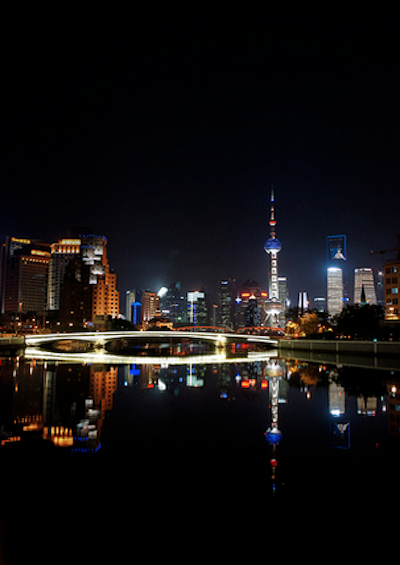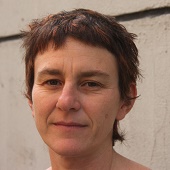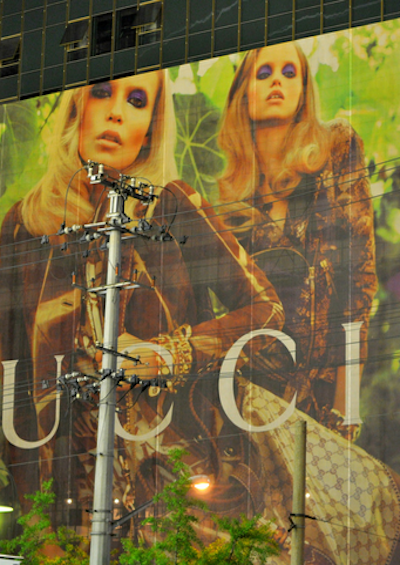Shanghai and China’s Embrace of Creativity
Shanghai envisions itself as the world’s next great cultural hub, a key site of China’s “soft power.”
December 26, 2014

In the mid-2000s, the theory of the creative economy came to China with full force. Previously, the country had focused almost exclusively on the manufacturing sector, which had been so successful at powering such incredible rates of growth.
Shanghai: In-Depth Look at a Global City
▪ Shanghai – A City Hungry for the Future
▪ Shanghai – Gazing At Its Own Image
▪ Shanghai and China’s Embrace Creativity
▪ Shanghai’s Thames Town
▪ Shanghai: The Underground Economy
▪ Shanghai and Its Environs
▪ Shanghai and Disruptive Innovation
Yet, after more than 20 years of opening and reform, there was a growing sense that more attention should be paid to the knowledge economy and the ultimately more valuable service sectors. It was no longer enough just to make things. China needed to create.
In December 2004, China held its first forum on creative industries. The concept was zealously cheered from the start. In a plethora of research meetings, conferences, industry forums and government policy papers, officials, scholars, practitioners, entrepreneurs and developers celebrated the introduction of the new buzzword.
Enthusiasm was especially intense in Shanghai, which was influenced in part by its close ties to Hong Kong. Officials were seduced by the creative industries’ promise of a new model of growth.
Creativity quickly became the “industry of the future,” seen as the key to a necessary and inevitable transition.
The time had come to shift the country away from low-cost labor and the production of cheap consumer goods and to move up the value chain. The aspiration was captured in a clever slogan: “From made in China to created in China.”
In addition to the hoped-for economic benefit, there were a number of other factors that played into the adoption of creative industries in China. First was the fact that the country is enormously attracted to and has had huge success in experimenting with urban clusters.
Science and technology parks were already pervasive and the clustering effects produced by the Special Economic Zones were well known. Also enticing was the fact that the creative industries offered a model of urban regeneration that could address the problem of a barren inner city landscape left by the ongoing reform of the State Owned Enterprises (SOEs).
Shanghai’s industrial zones are built on state-allocated land. The buildings themselves — even after the policies of urban de-industrialization have left them empty and abandoned — are typically still owned by the SOEs. As property owners of closed factories and warehouses, SOEs are free to rent leases of 20 years to private developers.
The state-owned manufacturing company is thus able to reap huge benefits from the booming property market and exploit the most profitable sector of Shanghai’s economic boom. Occasionally, SOE management gets into the business of creative industries themselves.
Creative clusters are thus produced through an intricate web of district governments, SOEs, private developers and the companies and workers of the creative class. In this unique form of economic activity — not exactly private, not exactly public — the tangled networks of relations frequently fold back in on themselves.
The incentives for creativity: tax loopholes
Some creative clusters, for example, are said to have formed creative companies in order to take advantages of tax incentives that are available in other nearby clusters. Tax loopholes and property speculation have thus joined forces to help generate the boom in creative clusters in Shanghai.
The problem, however, lies deeper than the clusters themselves. Shanghai envisions itself as the next great global cultural hub, a key site of China’s “soft power.”
The city now teems with infrastructure. Along with the plethora of creative clusters, over the past decade Shanghai has built a whole host of new theatres, concert halls and galleries.
Yet, there is a widespread sense that the city’s creative content does not match its future-oriented designs. Shanghai, goes the common cliché, has the hardware but not the software.
Editor’s note: The above text is adapted from “Shanghai Future, Modernity Remade,” by Anna Greenspan, London, C. Hurst & Company, 2014.

